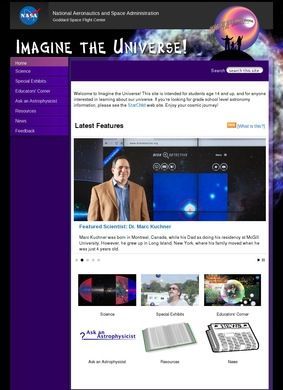The 'Imagine the Universe' website, managed by the National Aeronautics and Space Administration's (NASA) Goddard Space Flight Center, offers a comprehensive resource for students and individuals interested in learning more about the universe. The site is designed primarily for age groups 14 and up, providing extensive information, while promoting and facilitating further study in cosmic exploration.
The website navigation is presented in a way that allows users to delve straight into various sections such as science, the history of high energy observatories, and detection technology. This direct accessibility promotes a user-friendly interface for individuals seeking to quickly access and gather research material or even indulge in a casual browsing experience. In an educational angle, the 'Astronomer's Toolbox' and 'Cosmic Objects' sections can be particularly beneficial for students seeking to reinforce their understanding of the universe's various constituents.
An interesting feature of the site is its commitment to providing accessible resources, as seen in its recently expanded coloring pages feature. This not only includes scenes from NASA's Black Hole Safety video but also offers stained glass-inspired depictions of Fermi and its science. The latter, in conjunction with scenes from NASA's Tips for Near-light-speed Travel video provide a creative and engaging way for users of all age groups to interact with and understand complex cosmic concepts.
Of note are the educational programs provided, signifying NASA's commitment to promote the learning of space and its exploration. The 'Afterschool Universe', an out-of-school-time curriculum for middle schoolers, provides a structured way for youngsters to learn about the universe and the methods scientists use to study it. Comparable in its utility, 'Cosmic Times' serves as a series of curriculum supplements, indicating the site's keen interest in facilitating a thorough immersion into the field of astronomy.
The website also accommodates different assistance needs with resources such as 'Ask an Astrophysicist' tool and an extensive dictionary, providing valuable support for those exploring the vast expanse of universe study, making complex topics comprehensible. Verdict: 'Imagine the Universe' offers a plethora of resources that can cater to a range of needs and interests, making it a fitting choice for space enthusiasts as well as those pursuing advanced study in the field. It also exhibits an intentional and clear effort to make learning about the universe a fun, informative and accessible experience.
